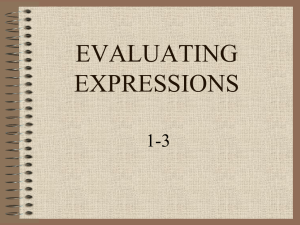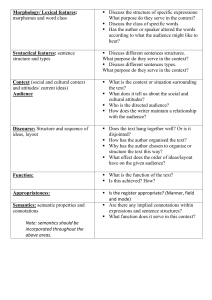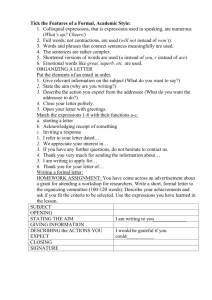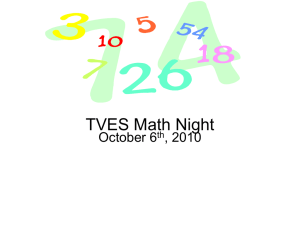Spatial language in dialogue: The role of modality in creating... Language: ENGLISH
advertisement
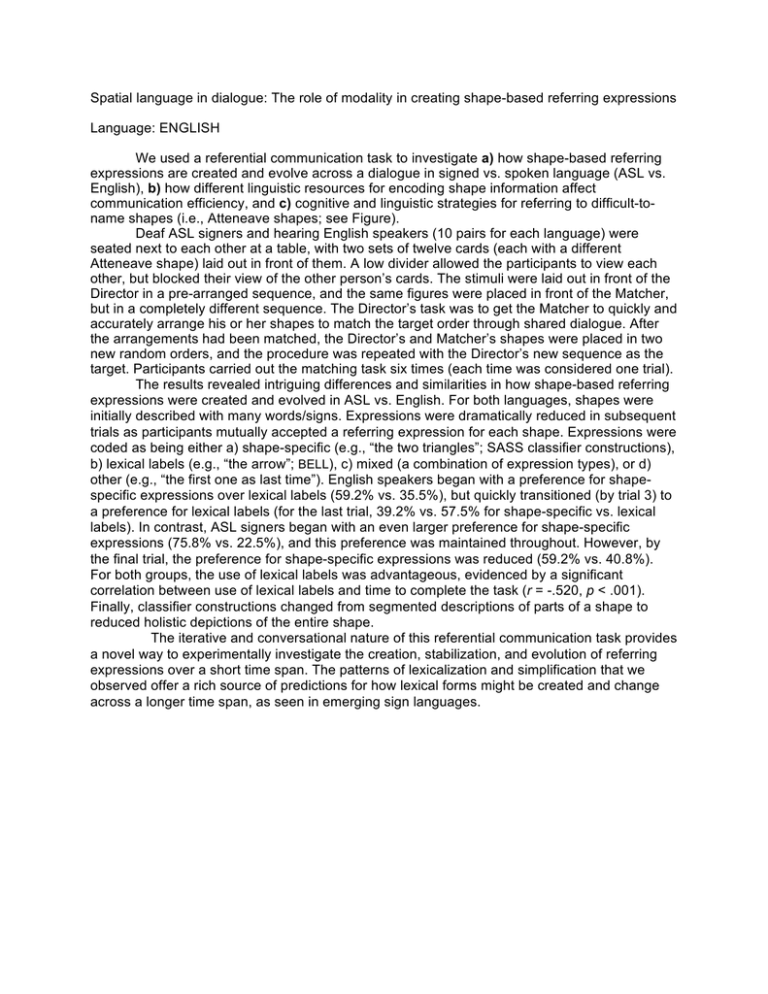
Spatial language in dialogue: The role of modality in creating shape-based referring expressions Language: ENGLISH We used a referential communication task to investigate a) how shape-based referring expressions are created and evolve across a dialogue in signed vs. spoken language (ASL vs. English), b) how different linguistic resources for encoding shape information affect communication efficiency, and c) cognitive and linguistic strategies for referring to difficult-toname shapes (i.e., Atteneave shapes; see Figure). Deaf ASL signers and hearing English speakers (10 pairs for each language) were seated next to each other at a table, with two sets of twelve cards (each with a different Atteneave shape) laid out in front of them. A low divider allowed the participants to view each other, but blocked their view of the other person’s cards. The stimuli were laid out in front of the Director in a pre-arranged sequence, and the same figures were placed in front of the Matcher, but in a completely different sequence. The Director’s task was to get the Matcher to quickly and accurately arrange his or her shapes to match the target order through shared dialogue. After the arrangements had been matched, the Director’s and Matcher’s shapes were placed in two new random orders, and the procedure was repeated with the Director’s new sequence as the target. Participants carried out the matching task six times (each time was considered one trial). The results revealed intriguing differences and similarities in how shape-based referring expressions were created and evolved in ASL vs. English. For both languages, shapes were initially described with many words/signs. Expressions were dramatically reduced in subsequent trials as participants mutually accepted a referring expression for each shape. Expressions were coded as being either a) shape-specific (e.g., “the two triangles”; SASS classifier constructions), b) lexical labels (e.g., “the arrow”; BELL), c) mixed (a combination of expression types), or d) other (e.g., “the first one as last time”). English speakers began with a preference for shapespecific expressions over lexical labels (59.2% vs. 35.5%), but quickly transitioned (by trial 3) to a preference for lexical labels (for the last trial, 39.2% vs. 57.5% for shape-specific vs. lexical labels). In contrast, ASL signers began with an even larger preference for shape-specific expressions (75.8% vs. 22.5%), and this preference was maintained throughout. However, by the final trial, the preference for shape-specific expressions was reduced (59.2% vs. 40.8%). For both groups, the use of lexical labels was advantageous, evidenced by a significant correlation between use of lexical labels and time to complete the task (r = -.520, p < .001). Finally, classifier constructions changed from segmented descriptions of parts of a shape to reduced holistic depictions of the entire shape. The iterative and conversational nature of this referential communication task provides a novel way to experimentally investigate the creation, stabilization, and evolution of referring expressions over a short time span. The patterns of lexicalization and simplification that we observed offer a rich source of predictions for how lexical forms might be created and change across a longer time span, as seen in emerging sign languages. Figure:



